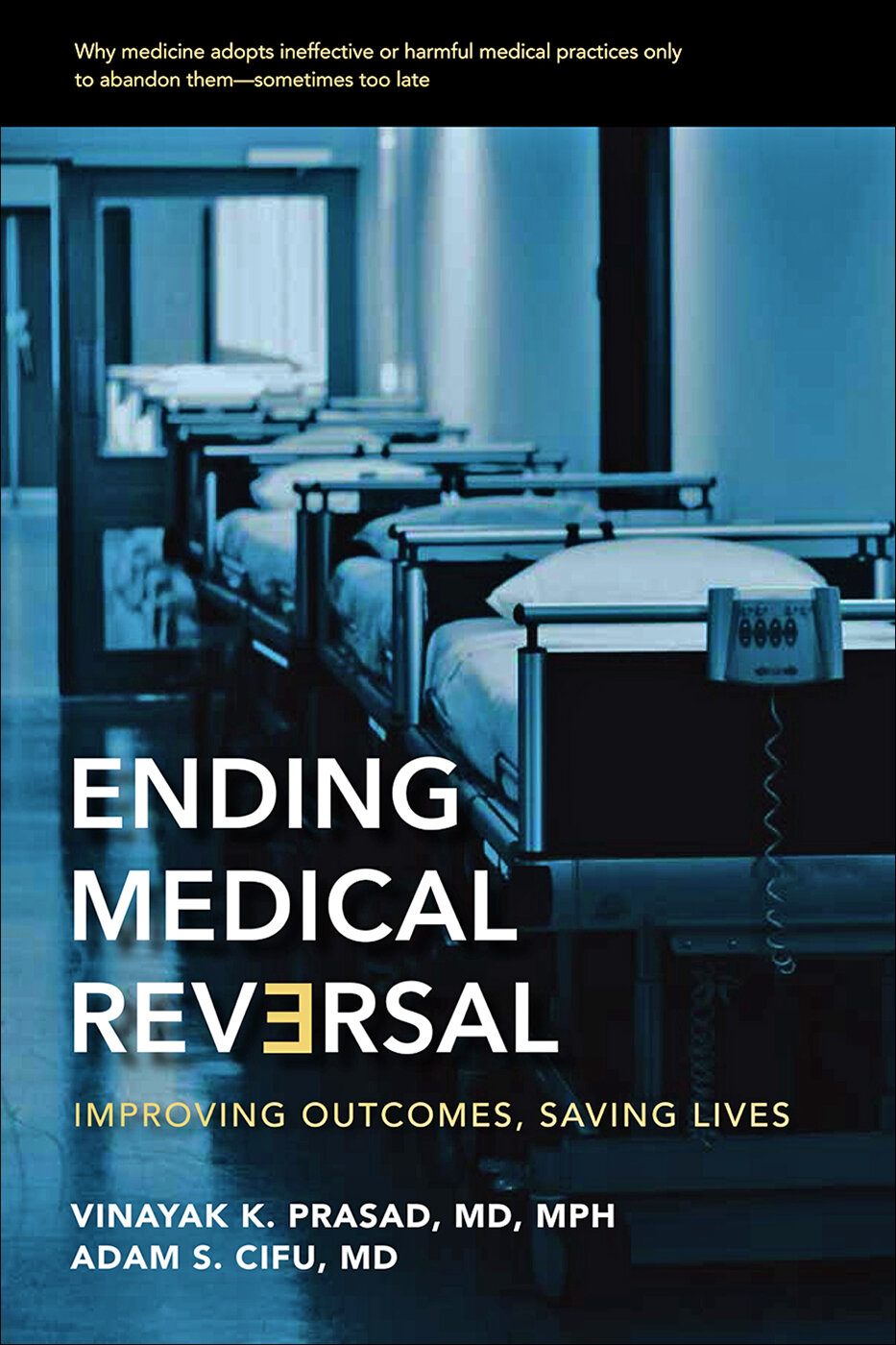Ending Medical Reversal: Improving Outcomes, Saving Lives
"Subtly subversive"
"More surprising, though, is an odd paradox: Often it is the treatments that make the most theoretical sense that fail."
We expect medicine to progress in an orderly fashion, with good medical practices being replaced by better ones. But some tests and therapies are discontinued because they are found to be worse, or at least no better, than what they replaced. Medications like Vioxx and procedures such as vertebroplasty for back pain caused by compression fractures are among the medical "advances" that turned out to be dangerous or useless. What Dr. Vinayak K. Prasad and Dr. Adam S. Cifu call medical reversal happens when doctors start using a medication, procedure, or diagnostic tool without a robust evidence base—and then stop using it when it is found not to help, or even to harm, patients.
Drs. Prasad and Cifu narrate fascinating stories from every corner of medicine to explore why medical reversals occur, how they are harmful, and what can be done to avoid them. They explore the difference between medical innovations that improve care and those that only appear to be promising. They also outline a comprehensive plan to reform medical education, research funding and protocols, and the process for approving new drugs that will ensure that more of what gets done in doctors’ offices and hospitals is truly effective.
Order from your favorite bookshop or, if you must, from Amazon.
Symptom to Diagnosis: An Evidenced-Based Guide
"This book is a tremendous asset for students and residents learning to develop their diagnostic skills. It can also be useful as a refresher for established clinicians when the more common diagnoses are not the cause of a patient's complaints."
―Doody's Review
Symptom to Diagnosis, Fourth Edition teaches an evidence-based, step-by-step process for evaluating, diagnosing, and treating patients based on their clinical complaints. By applying this process clinicians will be able to recognize specific diseases and prescribe the most effective therapy.
Each chapter is built around a common patient complaint that illustrates essential concepts and provides insight into the process by which the differential diagnosis is identified. As the case progresses, clinical reasoning is explained in detail. The differential diagnosis for that particular case is summarized in tables that highlight the clinical clues and important tests for the leading diagnostic hypothesis and alternative diagnostic hypotheses. As the chapter progresses, the pertinent diseases are reviewed. Just as in real life, the case unfolds in a stepwise fashion as tests are performed and diagnoses are confirmed or refuted.
Completely updated to reflect the latest research in clinical medicine, this fourth edition is enhanced by algorithms, summary tables, questions that direct evaluation, and an examination of recently developed diagnostic tools and guidelines. Clinical pearls are featured in every chapter. Coverage for each disease includes: Textbook Presentation, Disease Highlights, Evidence-Based Diagnosis, and Treatment.
While Symptom to Diagnosis was initially written by three authors for 2nd and 3rd year medical students. It is now written by clerkship directors from around the United States and has become a popular text in nursing schools and physician assistant programs. It has been translated into Russian, Japanese, Chinese, and Portuguese.
Order from your favorite bookshop or, if you must, from Amazon.

